Sounds
Clusters
A cluster is a group of adjacent notes played together and is originally a pianistic technique, that has been extended also to other instruments.
On the harp, there are different ways of playing clusters. The most common one is performed by hitting the strings with the open hand and bouncing off to let the strings resonate. The dynamic goes from pp to f. The lower the register, the more resonance of the strings will follow.
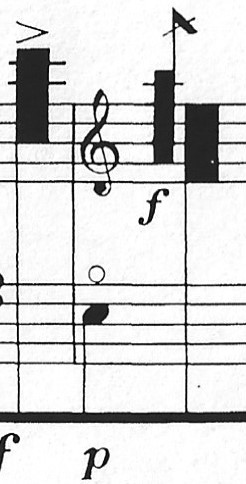
Luciano Berio, Sequenza II (1963) © Universal Edition, London.
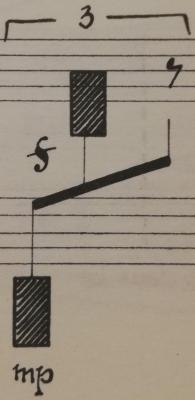
Ichiro Nodaïra, Messages I (1985) © Lemoine, Paris.

Tona Scherchen-Hsiao, Once Upon A Time (1979) © Amphion, Paris.
Muffled Cluster
A muffled cluster is being performed by placing the fingers or the edge of one hand on the indicated notes above the other hand that will play the strings; the exact place of the muffling hand can change depending on which kind of harmonics of each note should be perceived.
Another muffled cluster effect can be played by placing the muffling hand in the same position as for the xylophonic sounds and the strings are being plucked above it. The gesture can be very strong and hard, even though the dynamic is quite limited because of the muffling and arrives to a maximum of mf/f (See I. Xylophonic Sounds).

Luciano Berio, Sequenza II (1963) © Universal Edition, London.
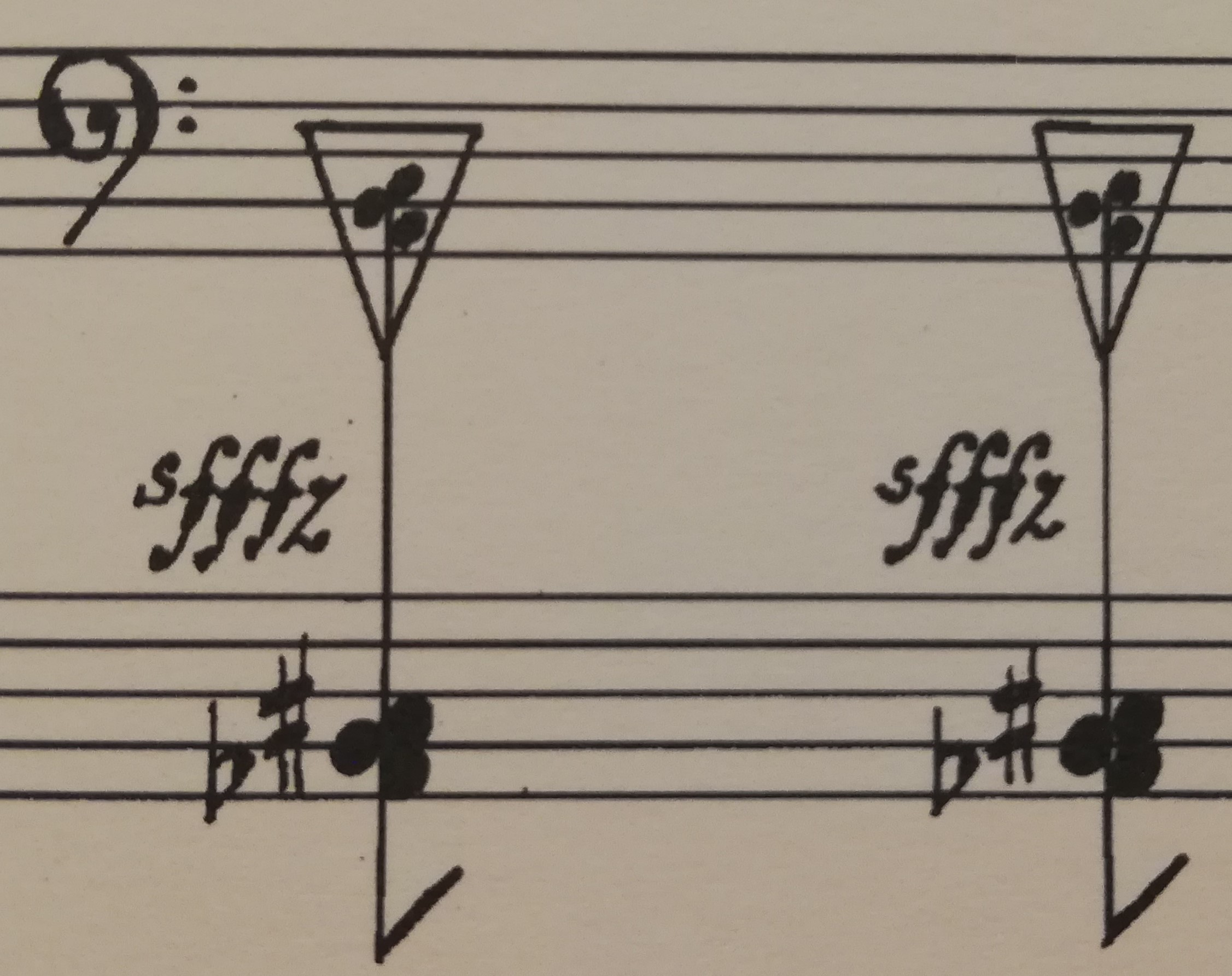
Yoshihisa Taïra, Sublimation (1971) © Durand, Paris.
Thunder Glissando
This effect occurs when the wire strings are played that violently during a short glissando, that they knock against each other and produce a loud, buzzing, metallic sound. It’s a very loud and energetic effect. First the symbol was a lighting, then it was simplified by a Z, which stays for the term zingage.
The thunder effect can be reinforced even more by using a pedal buzz at the same time (See IV. Pedal Buzz).

Yoshihisa Taïra, Sublimation (1971) © Durand, Paris.
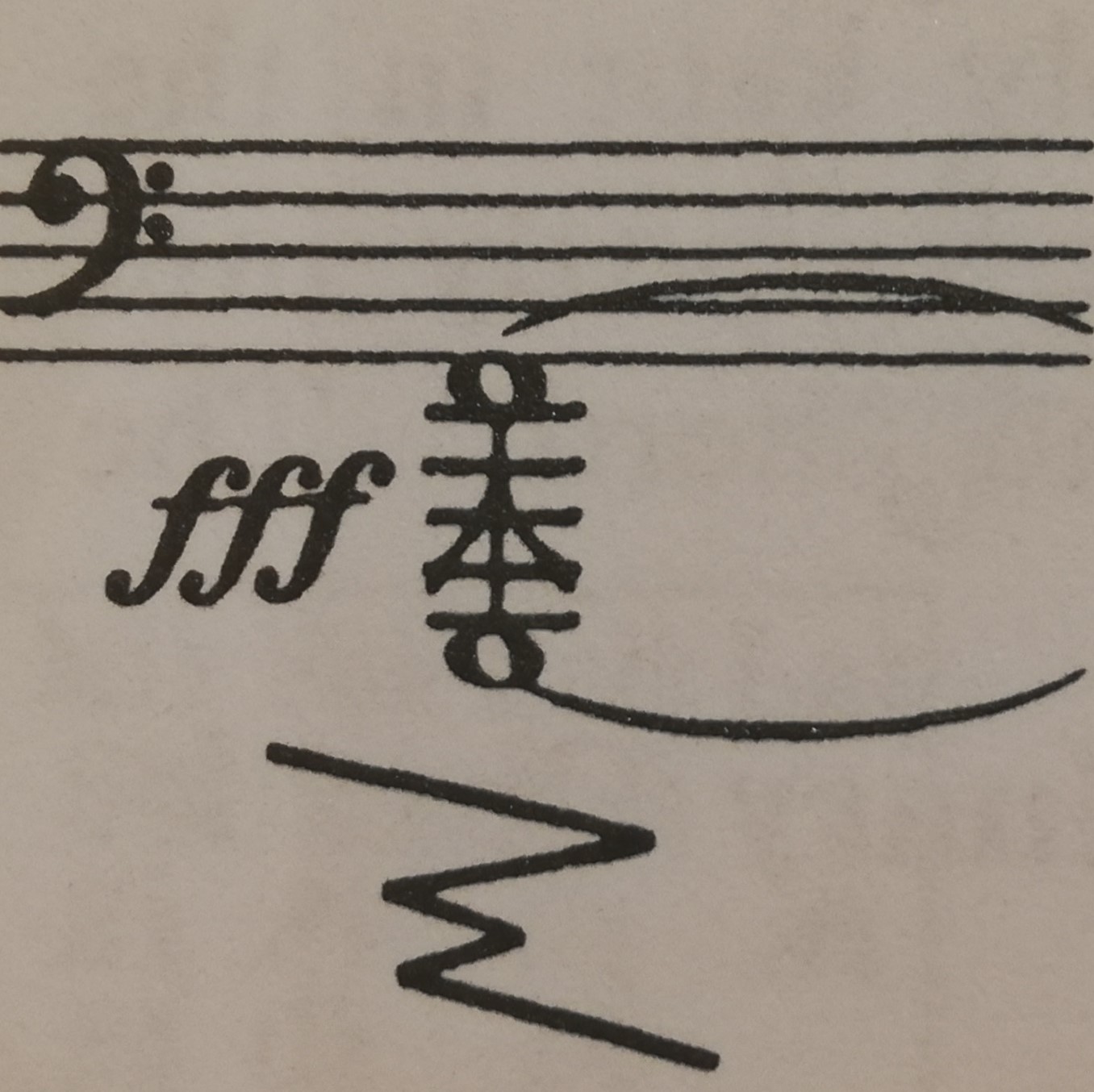
Carlos Salzedo, Modern Study of the Harp (1921) © G. Schirmer, Paris.
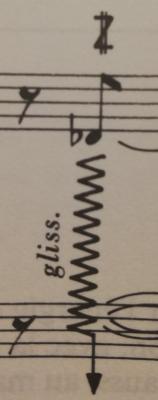
José-Luis Campana, Lust-ich I (1986) © Billaudot, Paris.
